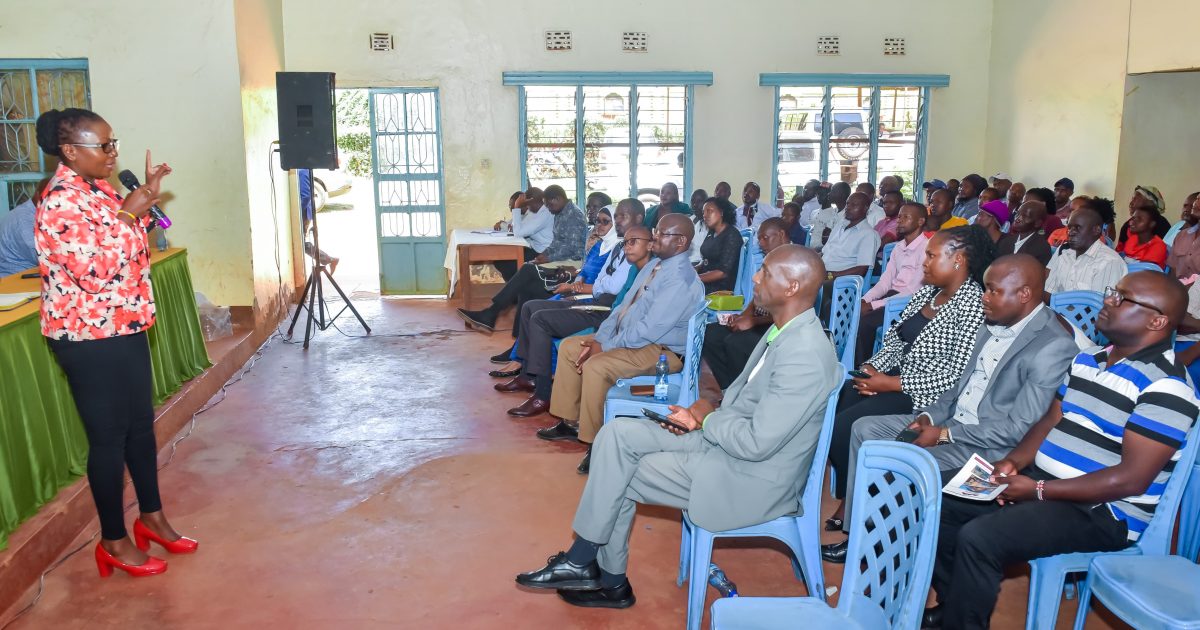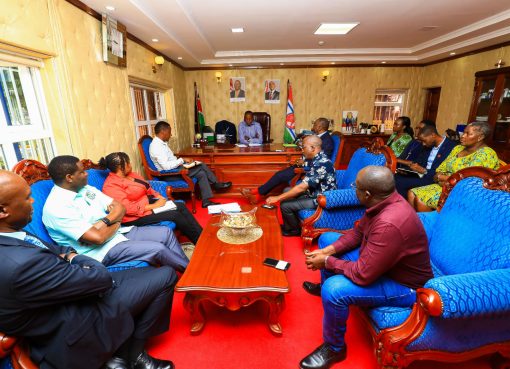The Kirinyaga County Government has completed a two-day public involvement exercise on the County Fiscal Strategy Paper (CFSP) 2024-2025, which prioritizes the implementation of life-changing development projects in all sectors.
The public involvement sought critical input from citizens on priority programmes, policies and changes to be implemented in the Medium-Term Expenditure Framework (MTEF).
The County Executive for Finance and Economic Planning Jackline Njogu stated that the strategy paper aims to build on Governor Anne Waiguru’s inclusive and sustainable growth trajectory objectives.
The allocation for the fiscal year 2024-25 and the medium term will be based on the need to fund investment that directly creates jobs and transforms people’s lives.
The first set of exercises took place in Kianyaga and Wang’uru towns, followed by sessions in Kerugoya and Baricho, where hundreds of citizens came to express their opinions.
The two-way public engagement mechanism, according to Njogu, has contributed to the county’s success in implementing development projects.
“If you invest in a project that is not people-oriented, you will be in conflict with the people’s needs, thus, implementation becomes extremely tough. Involving people in the planning stages ensures that implementation becomes much easier and helps reduce waste of public resources,” she emphasized.
The county executive emphasized the need for public participation, which she said involves “listening to the people,” both to understand their needs and to assess how their lives are actually being affected by government projects and policies.
She said Governor Waiguru’s administration has implemented projects worth billions of shillings in the county with the support of the community.
“The main aim of public participation is to encourage the public to have meaningful input into the decision-making process. Public participation thus provides the opportunity for the government to listen to and understand the needs of the people,” she said.
Njogu said over the years, the county government has invested in projects that have had the greatest impact on people, among them the construction and equipping of health facilities, water supply, bursaries, road rehabilitation, construction of markets, cabro paving of the town, and street lighting, among others.
“Most of these projects are people-driven initiatives; it is through public participation that the community tells us what they want, and then we allocate funds for the projects. This way, the projects have the support of the people,” she added.
The county Executive further elaborated on the significance of the County Strategy Physical Paper, emphasizing its dual role as a developmental roadmap and a legal requirement.
“The county strategy physical paper serves as a report that not only shows projects that people want but also as a record of past projects and their impacts. It is required by law and should be submitted to the County Assembly by February 28, 2024,” she explained.
Speaking during one of the forums in Baricho, a resident Muriithi Murani asked the county government to develop mechanisms to market the Technical and Vocational Education (TVETS) centers so as to attract more youths to pursue career courses.
“Our TVETs have one problem that I would like the county government to address: mobilization so that many of the youths can enroll in the technical courses. We should also have WiFi in our TVET institution to help the youth get digital space skills courses to tap into online job opportunities,” he said.
Another resident, Jeniffer Muriuki, stated that the county government should consider providing free diabetes and hypertension medicine in all medical facilities due to the increase in lifestyle disorders in the county.
“There are reports of our county being ranked as having the highest prevalence of diabetes and hypertension; we are asking that the county prioritize the provision of free medication for the diseases in all the facilities,” she said.
Kirinyaga County Disability Organization Chairperson Lucy Wangari requested that the county government consult with representatives of people living with disabilities (PLWDs), while determining which assistive gadgets to acquire for the people.
She also requested that the county monitor strict adherence to building laws, standards, and regulations to ensure that all public buildings are accessible to people with disabilities.
By David Wandeto




